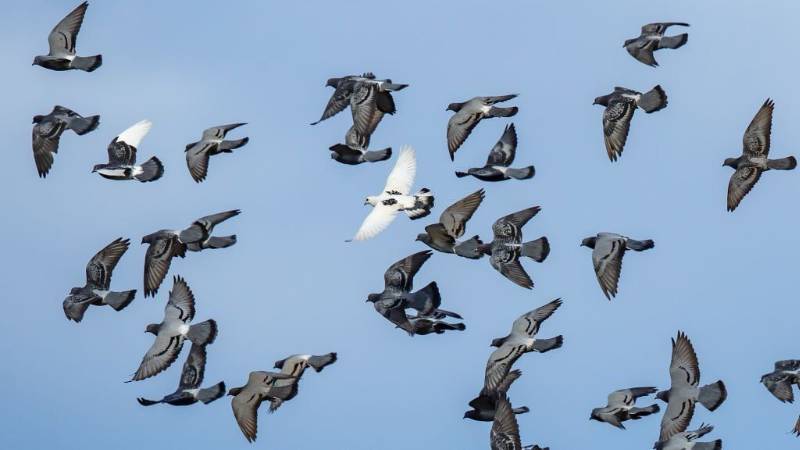Installing its forms when hunting the pigeon is not a matter of chance. Several factors come into play for a successful pigeon hunting trip. We reveal 5 hitching techniques for pigeon hunting without the decoy.
- Discover our tips on How to Stay Hidden When Hunting.
1. The Best Conditions
Pigeon hunting is popular all year round. These are the best conditions a pigeon hunter can encounter. The wind blows in the back of the hunter which will encourage the pigeons to come from the front. The forms of pigeons are positioned between 20 and 25 meters from the lookout, they form a horseshoe, wide enough to allow wood pigeons to pose in its center.
2. Crosswind
The hunter cannot position his hunting blind in such a way as to have the wind at his back, so it comes at him sideways. We will still use the principle of the horseshoe, the opening opposite the direction of the wind. The form of pigeons is positioned 20/25 meters from the hide, which places the landing zone between 25 and 30 meters (ideal shooting distance).
3. The pigeons pass outside

Using one of these first techniques, you notice that the wood pigeons pass outside the horseshoe formed by your pigeon chard. Make sure it is open at a distance of 20 to 30 meters, depending on the configuration. If so, try this alternative technique:
Arrange the chard in the shape of a large “L”. Be careful not to overload your team with too many pigeon shapes. The wood pigeon needs to have a clear overview before it is confident enough to come and land in your team. A surplus of forms is not necessarily positive.
4. Increase Your Chances with Moving Shapes!
To make your coupling more attractive, it is strongly recommended to use mobile shapes. This chard moves with the help of the wind or a motor. They make it possible to increase the realism of your coupling. Another advantage provided by these forms, the pigeons will focus on their movement and therefore less on you.
There is a multitude of them – the most popular being the Hypaflap. Here is an example of coupling using two Hypaflap shapes, which could be replaced by two pigeon chard with open wings installed on floats or even two pigeons with rotating wings.
The hunter should place the Hypaflap pigeon decoys about 30 meters from the lookout. After setting up a few decoys on the way back, the Hypaflaps—with open wings or rotating-wing pigeon decoys—should be positioned facing the wind to create natural movement.
5. Hypaflap and crosswind
Use the “horseshoe” technique, just add the moving shapes to the ends of it. There are many variations of these few techniques, it’s up to you to adapt each of them according to your territory and your hunting methods. We’ll discuss in a future article the different hitching techniques for hunting pigeons with decoys on the ground.
Conclusion: Pleasure above all
Pigeon hunting is above all a passion, a pleasure shared with a few friends, gathered for a day and sharing unique moments. Leave aside the numbers and the quest for big paintings, remember to treat yourself above all. We wish you an excellent season, rich in passion and emotions!
Frequently Asked Questions (FAQs):
What is the best location for pigeon hunting?
Pigeons are often found near agricultural areas, feeding on crops such as grains. Look for fields with standing crops or recently harvested fields. Pigeons are also attracted to areas with water sources, making them good locations for hunting.
How important is concealment in pigeon hunting?
Concealment is crucial. Pigeons have sharp eyesight, any movement or unusual shapes can alert them. Use natural cover or set up blinds to hide from the pigeons. Camouflage clothing and equipment are essential for staying hidden.
What decoy strategies work well for pigeon hunting?
Decoys are highly effective. Set up realistic pigeon decoys in the hunting area, using a mix of feeding and alert postures. Motion decoys, such as spinning-wing decoys, can add realism and attract pigeons from a distance.
What types of calls are effective in pigeon hunting?
Pigeon calls can be effective in attracting birds. Use electronic or hand-operated calls that mimic the sounds of pigeons, including cooing and wing flapping. Experiment with different calls to find what works best in your hunting area.
See Also…
